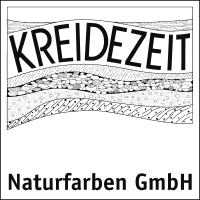Gerd Ziesemann, our company founder, was the youngest beekeeper in Germany and was interested in beekeeping.
Our production manager Stephan, beekeeper since 2015, now takes up this topic, inspired by the recommendation of the beekeeper Karen Lau from the bee nursery at Deister. In search of a natural coat of paint for his own hives, she recommended to him the products of Kreidezeit. More than 20 years ago, the beekeeper painted all hive material with Kreidezeit products. Even today she is still enthusiastic about the quality and durability of the first coat.
A number of enquiries from beekeepers to our specialist consultants also show that our products are already being used in beekeeping. Especially many new beekeepers, who are interested in keeping bees in a manner appropriate to their species, are looking for a natural and ecologically compatible coating for their hives.
Our Kreidezeit Stand Oil Paint System is ideal for long-lasting, natural and ecological protection against the effects of the weather. The ingredients of the stand oil colour are natural and do not affect the bees. To achieve a reasonable processing quality, natural balsam turpentine oil is contained as solvent. This is obtained from conifers and evaporates completely when the paint dries. Possibly minimal remains are harmless, since bees as original tree cave dwellers are used to this substance. This substance is also naturally contained in a wooden or block bag made of coniferous wood.
The Kreidezeit Stand Oil Paint is resin-free. This prevents it from tearing, bursting and leafing through. The good diffusibility of the stand oil paint ensures that moisture is removed from the wood interior to the environment. The wood is protected from rot by waterlogging. The zinc white pigment contained in the paint increases the weather resistance of the coating. Only lightfast and weather-resistant earth and mineral pigments are used to pigment the stand oil paint.
Stand oil paint remains elastic and gradually scents off on the surface, while the paint underneath remains intact. Later refreshing is possible without great effort by simple cleaning and painting over. It is sufficient to rub the matted areas, usually only on the weather side, with a colourless Care Oil, e.g. the solvent-free cretaceous time window care oil. The time-consuming removal of the old coating, as with other coating systems, is no longer necessary.
 1. Slightly sand surfaces with P100 sandpaper.
1. Slightly sand surfaces with P100 sandpaper. 2. Apply base oil with a brush.
2. Apply base oil with a brush. 3. Wipe off any excess with a lint-free cloth after 20 minutes. 24 hours drying time
3. Wipe off any excess with a lint-free cloth after 20 minutes. 24 hours drying time 4. Stir the stand oil colour -half rich- well with a stirring wood and apply with a brush. 24 hours drying time
4. Stir the stand oil colour -half rich- well with a stirring wood and apply with a brush. 24 hours drying time 5. Stir the stand oil paint -rich- well with a stirring wood and apply with a brush. 48 hours drying time
5. Stir the stand oil paint -rich- well with a stirring wood and apply with a brush. 48 hours drying time
The waiting times refer to an ambient temperature of 20°C. Lower temperatures require longer drying times. The temperature must not fall below 10°C. I.e., who would like to paint in preparation for the coming bee year in winter, should do this e.g. in a heated workshop. In addition, nasal formation must be avoided or reduced by subsequent application, as otherwise longer drying times will occur at these points; in principle, an even and thin application of paint must be ensured.
The stand oil paint is excellently suited to protect new wooden hives from damage caused by the weather for many years and requires little maintenance. For this purpose, the substrate must be pH-neutral. This should be the case for new, untreated hives. Disinfection with caustic soda must therefore be dispensed with for used hives. Instead, the inside of the frame can be disinfected by flaming off. Even after painting, the wooden hives must not be cleaned with caustic soda, which is also unusual for wooden hives. A thorough mechanical pre-cleaning (scraping off wax and propolis residues with a stick chisel) with subsequent flaming is sufficient to disinfect the inside of the frame. A caustic soda treatment is only common for plastic boxes, as these cannot be flamed off for understandable reasons. The paint would dissolve under the influence of caustic soda, as with the stripping of old wood!
If the grain of the wood is to be visible, our wood lazure can also be used for exterior use. However, the protective effect is considerably less than with the stand oil paint! The prey must then be protected from intensive and standing moisture. A roofed installation is a good idea here.
Our non-toxic and lightfast earth and mineral pigments should be used to protect the wood from greying by UV radiation. The higher the pigment content, the higher the UV protection. The highest degree of protection is achieved with the fully covering stand oil paint.
However, the maintenance of the wooden hives is higher and, depending on the local conditions at the place of installation and the degree of pigmentation, it must be repainted approx. every two years in order to achieve optimum wood protection.
We too want to make our contribution to the protection of honeybees. These are repeatedly threatened by causes such as the use of pesticides, lack of food due to the cleared landscape and the varroa mite. In addition to their enormous economic and social benefits as pollinators, they are also important for some of our Cretaceous products, such as lobe wax, which contains beeswax.
Besides the insect hotels already installed on our company premises, we will keep our own Cretaceous bees in the future. In doing so, we will increasingly use elements of beekeeping appropriate to the nature of the bee.



